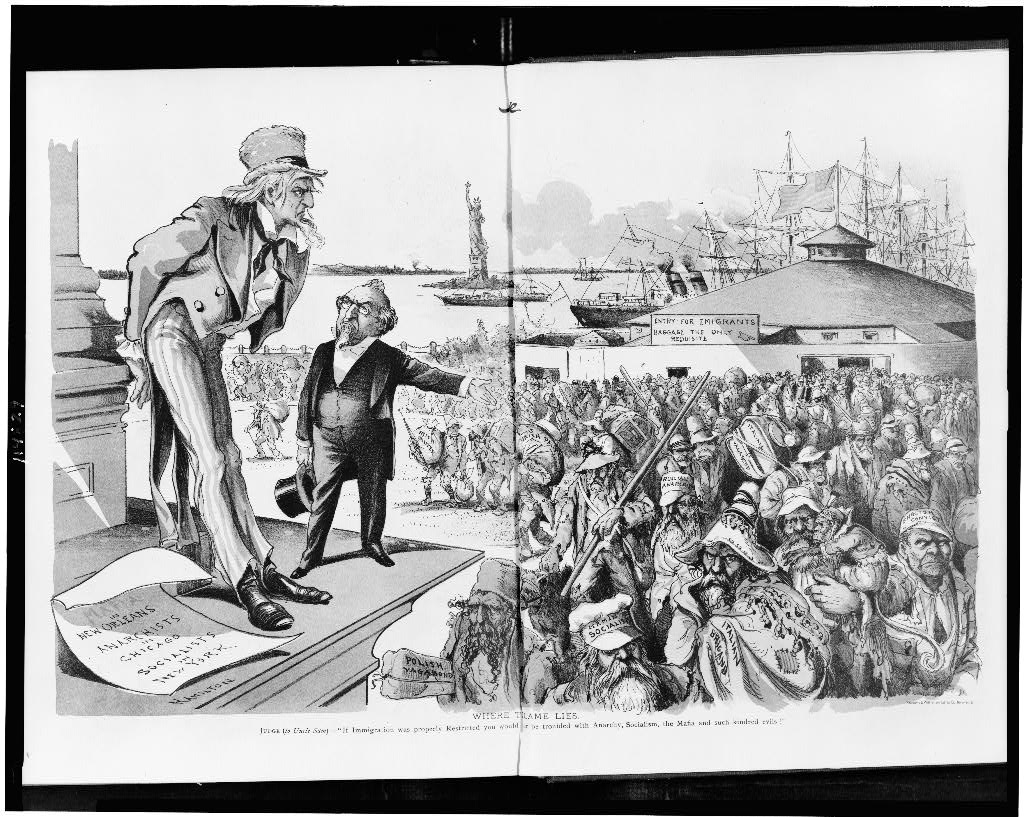
Immigration Act of 1891
This law added immigration restrictions for new groups of people and established the Office of the Superintendent of Immigration under the US Treasury Department. The goal was to expand immigration rules and inspection, as well as to centralize immigration enforcement under the federal government.
The Immigration Act of 1891 called for the deportation of people who entered the country illegally and denied entry for polygamists, the mentally ill, and those with contagious diseases.
This law also established the Office of the Superintendent of Immigration, institutionalizing the ongoing monitoring and management of immigration. Appointed by the president, the superintendent oversaw US immigrant inspectors across various key ports of entry. The Office’s inspectors took on many duties formerly held by customs officials – such as gathering ships’ passenger lists – and determined and recorded immigrants’ admissibility. The Office of the Superintendent of Immigration later became the Bureau of Immigration. More than 100 years later and after several reorganizations, it now exists as three components of the Department of Homeland Security.

